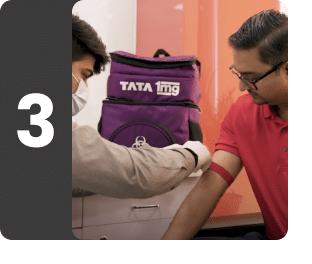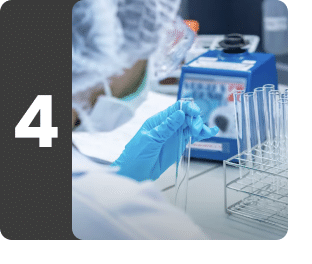Urinary Tract Infection Panel near me in Chennai
Understanding Urinary Tract Infection Panel in Chennai
What is Urinary Tract Infection Panel in Chennai?
The Urinary Tract Infection Panel comprises a range of blood and urine tests that help diagnose urinary tract infections (UTIs). This comprehensive evaluation allows doctors to find out the specific pathogen causing the infection in the urinary tract. It is widely available with Tata 1mg labs at an affordable price in Chennai.
This panel is suggested for individuals experiencing symptoms suggestive of a UTI, such as frequent urination, a burning sensation during urination, cloudy or foul-smelling urine, fever, pelvic pain, etc. It is also advised for individuals with a previous history of recurrent UTIs, underlying kidney problems, or those at high risk for complications, including the elderly, young children, diabetics, and pregnant women.
Before the test, drink enough water to be able to submit a urine sample. Collect a first-morning midstream urine sample into a sterile container provided by the sample collection professional. Make sure that the sample collection container doesn't come in contact with your skin. Women are advised not to give the sample during the menstrual period unless prescribed.
What does Urinary Tract Infection Panel measure?
Contains 22 testsThe Urinary Tract Infection Panel is a diagnostic test that measures various components in the urine to help identify the presence of an infection in the urinary tract. This panel includes tests for urine culture and microscopy which helps identify the presence of bacteria, white blood cells, nitrites, blood, and protein in the urine, helping in diagnosing urinary tract infection (UTI) and its severity. Also, it includes tests like blood urea nitrogen, serum creatinine, and uric acid all of which help assess kidney health and overall kidney function. Abnormal results of any of these tests can indicate UTI, kidney dysfunction, or other urinary system disorders, enabling doctors to tailor appropriate treatment plans.

Blood Urea Nitrogen
The Blood Urea Nitrogen test measures the levels of urea nitrogen in the blood. Blood urea is a waste product that is formed in the liver when you eat food and the protein is metabolized into amino acids. This process leads to the production of ammonia that is further converted into urea. Both ammonia and urea are nitrogenous compounds. Your liver releases urea into the blood which is then carried out to the kidneys. In the kidneys, urea is filtered from the blood and flushed out of the body via urine. This is a continuous process, so a small amount of urea nitrogen always remains in the blood.
In the case of a kidney or liver disease, there is a change in the amount of urea present in the blood. If your liver produces urea in an increased amount or if there is any problem in kidney functioning, there might be difficulty in filtering out the waste products from the blood, which can result in increased urea levels in the blood.
Know more about Blood Urea Nitrogen

Serum Creatinine
The Serum Creatinine test measures the level of creatinine in the blood. Creatinine is a byproduct of muscles’ wear and tear during energy production. The kidneys remove it from the body by filtering it from the blood and releasing it into the urine. Therefore, blood creatinine levels indicate how well the kidneys are functioning in filtering and removing waste products from the blood. Generally, higher creatinine levels in the blood may indicate reduced kidney function, while lower levels may suggest decreased muscle mass.
Know more about Serum Creatinine

Uric Acid
An Uric Acid test determines the level of uric acid in your body. Uric acid is a nitrogenous compound produced by the metabolic breakdown of purine. Purines are present as nitrogenous bases in the DNA and are also found in food like red meat and seafood.
Most uric acid dissolves in the blood and goes into your kidneys. From there, it passes through your body via the urine. Decreased elimination of uric acid is often a result of impaired kidney function due to kidney disease. In many cases, the exact cause of excess uric acid is unknown. Doctors seldom need to test for low levels of uric acid.
Know more about Uric Acid

Urine C/S (Urine Culture and Sensitivity)
The Urine C/S (Urine Culture and Sensitivity) test helps identify the bacteria or yeast (few candida spp.) causing UTI; the most common bacteria responsible for UTI is E.coli. Once the pathogen (harmful microorganism) is identified, the antibiotic susceptibility test is done to formulate a treatment plan for the infection.
Know more about Urine C/S (Urine Culture and Sensitivity)

Urine R/M (Urine Routine & Microscopy)
The Urine R/M (Urine Routine & Microscopy) test involves gross, chemical, and microscopic evaluation of the urine sample.
-
Gross examination: It involves visually inspecting the urine sample for color and appearance. Typically, the urine color ranges from colorless or pale yellow to deep amber, depending on the urine’s concentration. Things such as medications, supplements, and some foods such as beetroot can affect the color of your urine. However, unusual urine color can also be a sign of disease.
In appearance, the urine sample may be clear or cloudy. A clear appearance is indicative of healthy urine. However, the presence of red blood cells, white blood cells, bacteria, etc., may result in cloudy urine, indicating conditions such as dehydration, UTIs, kidney stones, etc. Some other factors, such as sperm and skin cells, may also result in a cloudy appearance but are harmless.
-
Chemical examination: It examines the chemical nature of the urine sample using special test strips called dipsticks. These test strips are dipped into the urine sample and change color when they come in contact with specific substances. The degree of color change estimates the amount of the substance present. Some common things detected include protein, urine pH, ketones, glucose, specific gravity, blood, bilirubin, nitrites, and urobilinogen.
-
Microscopic examination: This involves the analysis of the urine sample under the microscope for pus cells, red blood cells, casts, crystals, bacteria, yeast. and other constituents.
Know more about Urine R/M (Urine Routine & Microscopy)
This further contains
- Urobilinogen
- Ketone
- Nitrite
- Colour
- Appearance
- Specific Gravity
- Pus Cell
- Epithelial Cell
- Casts
- Crystals
- Protein Urine
- Ph for Urine
- Urine Glucose
- Yeast
- Red Blood Cells
- Leucocyte Esterase
- Blood
- Bacteria
Answers to Patient Concerns & Frequently Asked Questions (FAQs) about Urinary Tract Infection Panel in Chennai
Frequently Asked Questions about Urinary Tract Infection Panel in Chennai
Q. What is the purpose of the Urinary Tract Infection Panel?
Q. Is there any risk associated with the Urinary Tract Infection Panel?
Q. Can the Urinary Tract Infection Panel test detect sexually transmitted diseases?
Q. Why is it advised to collect midstream urine for the Urinary Tract Infection Panel test?
Q. Why is the urine culture and sensitivity test important for detecting urinary tract infections?
Q. Can I schedule the Urinary Tract Infection Panel online in Chennai near me?
Q. Is home sample collection facility available for the Urinary Tract Infection Panel in Chennai with Tata 1mg Labs?
Q. How can I schedule the Urinary Tract Infection Panel with Tata 1mg Labs in Chennai?
Q. What is the cost of the Urinary Tract Infection Panel at Tata 1mg Labs in Chennai?
Q. How long does Tata 1mg Labs take to give the reports of the Urinary Tract Infection Panel in Chennai?
Book a Urinary Tract Infection Panel test at home near me





Other tests









